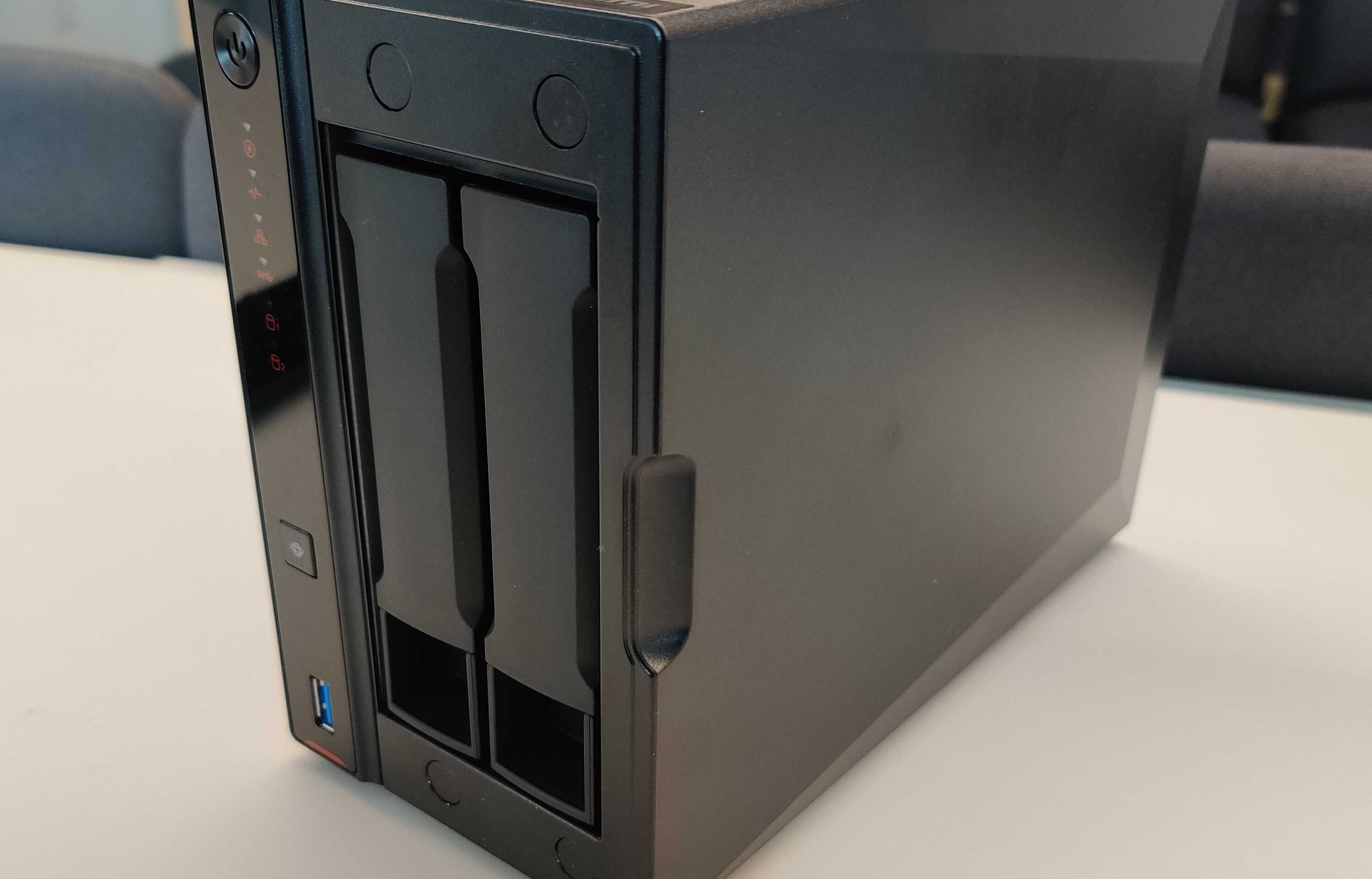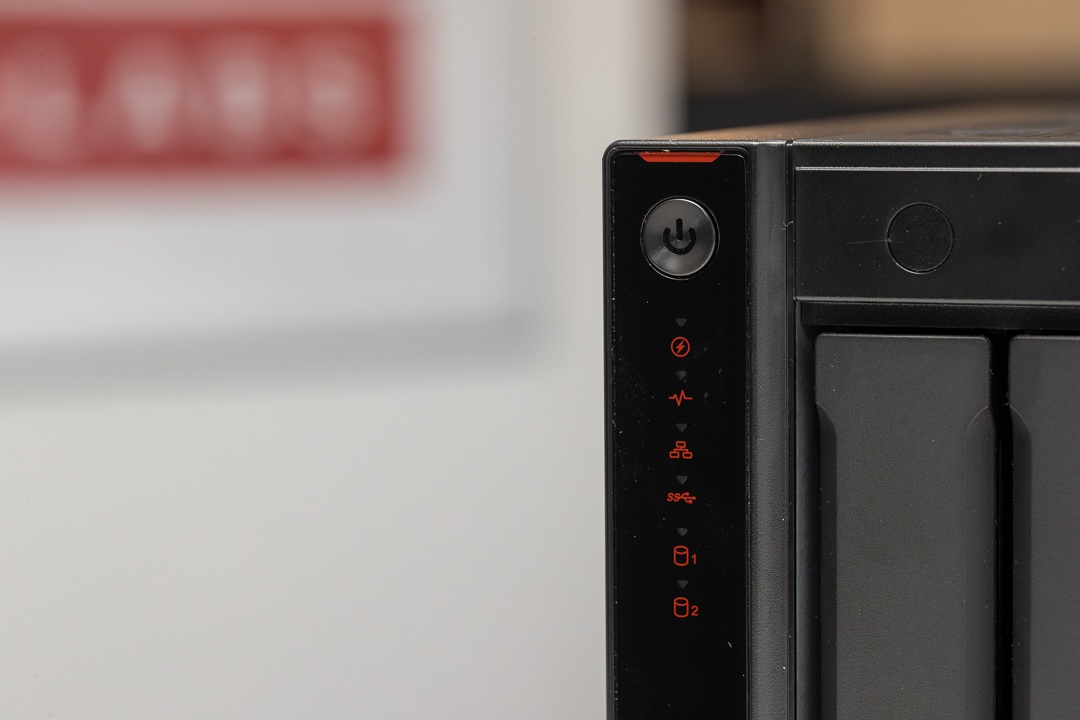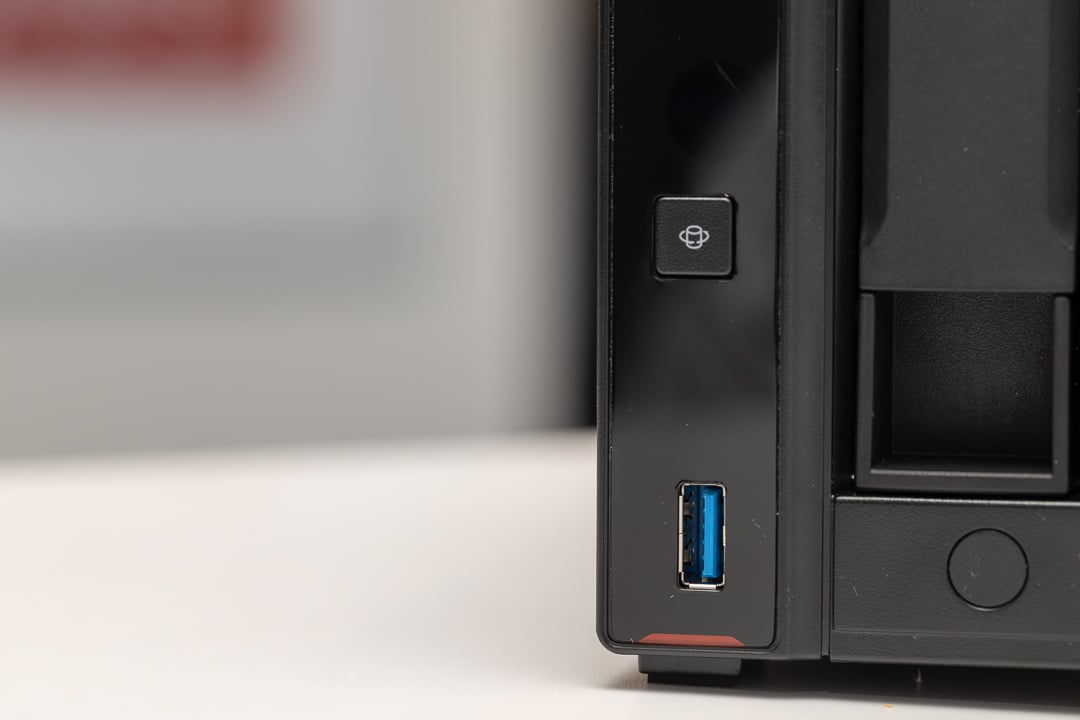-
Pros
- Speedy performance
- Multi-gig LAN
- Four M.2 SSD slots for caching
- High-speed USB ports
- Generous app catalog
-
Cons
- Pricey
- Drives not included
Asustor AS5402T Specs
| Bay Size | 2.5 and 3.5-inch |
| Connection Type | 2.5Gbe (2) |
| Connection Type | USB 3.2 (3) |
| External USB Hard Disk Expansion | |
| Hard Disk Configuration | RAID 1 |
| Media Server | |
| Network Medium | Wired |
| Number of Bays | 2 |
| Printer Server | |
| Rack-mount or Standalone | Standalone |
| RAID Level | JBOD |
| RAID Level | RAID 0 |
| RAID Level | RAID 1 |
| RAID Level | single |
| Remote Access | |
| UPnP Capable | |
| Wired Network Speed | 10/100/1000/2.5GbE |
Designed for content creators and home power users, the Asustor AS5402T ($369) is a powerful two-bay NAS packed with high-speed components. Sporting a pair of 2.5GbE LAN ports, three 10Gbps USB ports, and four M.2 slots for NVMe solid-state drive caching, the AS5402T delivered incredibly fast file-transfer speeds in our performance testing. It also offers a well-stocked catalog of Asustor and third-party applications. It’s a bit pricey for a dual-bay device that doesn’t come with storage drives, but its beefy specs and speedy performance still easily earn it an Editors’ Choice award for two-bay NAS drives.
Design: Amping Up the Internal Cooling
With a chiseled faceplate and a black finish, the AS5402T looks similar to the AS5202T that we reviewed back in 2019, but this time around you'll notice some cooling vents embedded in the top of the enclosure that aren't there on the previous model. The cabinet measures 6.6 by 4.4 by 9.0 inches (HWD), and is equipped with two removable tool-free drive sleds that are hidden behind the magnetic front faceplate.
 (Credit: John Burek)
(Credit: John Burek)To the left of the drive bays are power, hard drive, USB, system, and network activity indicators, as well as a power button, a One-Touch Backup button, and a USB 3.2 Gen 2 port. The rear panel is home to a pair of 2.5GbE LAN ports, two additional USB 3.2 Gen 2 ports, an HDMI video output, and a power jack. A single 70mm fan works with the above-mentioned vents to help keep internal components cool.
 (Credit: Joseph Maldonado)
(Credit: Joseph Maldonado)The AS5402T is powered by Intel’s 2.0GHz quad-core Celeron N5105 CPU, 8GB of eMMC memory, and 4GB of DDR4 RAM. The memory can be upgraded to 16GB by replacing the single 4GB module with two 8GB modules. This is the first two-bay NAS we’ve seen that is equipped with four M.2 slots for installing NVMe solid state drives (SSDs); few consumer offerings have this feature, and most that do are equipped with just two such slots. The high-speed SSD modules can be used for caching and to accelerate content creation and other labor-intensive tasks. Link aggregation and 4K video transcoding are also supported.
Supported RAID configurations include Single, JBOD, RAID 0, and RAID 1, and supported file types include EXT4 and Btrfs. The AS5402T can be populated with 3.5-inch or 2.5-inch SATA hard disk drives (or 2.5-inch SATA SSDs) in the two main drive bays, in addition to the four M.2 slots. Raw internal storage capacity maxes out at 48TB using two 24TB hard drives, but you can add another 12 drive bays by connecting up to three AS6004U expansion units.
 (Credit: Joseph Maldonado)
(Credit: Joseph Maldonado)As with every other Asustor NAS device, the AS5402T uses the Asustor Data Master (ADM) operating system, a web-based program with a Windows-like look and feel that makes it easy to manage the NAS. It can also be controlled using the AiMaster mobile app, but the web console offers more settings. Upon startup, the console’s game-themed desktop screen is populated with icons including Storage Manager, Access Control, Activity Monitor, App Central, Backup and Restore, File Explorer, Settings, Dr. Asustor, and Snapshot Center. As you download more apps, their icons will be added to the desktop.
Use the Access Control icon to create users and groups, assign user and group privileges, add shared folders, and create virtual drives. When you tap the Activity Monitor icon, you’ll open a screen that displays real-time CPU, memory, and network activity, as well as charts of drive usage statistics. Tap the Storage Manager icon to create and manage storage volumes, scan for bad blocks, and view drive health information.
 (Credit: Joseph Maldonado)
(Credit: Joseph Maldonado)The File Explorer menu lets you browse, manage, and share files; assign folder permissions; and format external drives. The Backup and Restore icon opens a menu for remote syncing, cloud backups, and scheduled backup. Here you can also configure One-Touch Backups. The Settings icon takes you to a screen where you can configure fan speed and LED brightness, enable disk hibernation and sleep mode options, configure network settings, and enable anti-malware options.
The App Central icon opens a screen that lists all of the available Asustor and third-party apps, with categories such as home entertainment, backup and restore, database management, web hosting, camera surveillance, and home automation. The catalog offers more than 270 apps as of this writing, with more being added regularly. Finally, you can tap the Dr. Asustor icon to run system and connectivity diagnostics and check for malware, and use the Snapshot Center to manage and restore instant backups (which require the Btrfs file system).
Testing the Asustor AS5402T: Squeezing the Most From Platters
To install the AS5402T, I connected it to a 2.5GbE switch, which is also connected to my modem and to my desktop PC’s 10GbE LAN port. I installed two 10TB Seagate Ironwolf drives, powered up the NAS, and downloaded the Asustor Control Center utility. The device was immediately recognized, so I tapped the Uninitialized button, which is used to initialize the drives and upload the latest version of ADM. After a minute or two, the device restarted and I was presented with a screen with options to perform a one-click setup or a custom setup. I chose custom setup, created an administrative password, chose a time zone, and configured network settings. I selected RAID 1 and the Btrfs file format, and after waiting several hours for the drives to sync, I was ready for testing.
 (Credit: Joseph Maldonado)
(Credit: Joseph Maldonado)We test NAS file transfer performance by moving a 4.9GB folder containing a mix of music, video, photo, and office document files between the NAS and a desktop PC and recording the read and write speeds. Our testbed includes a QNAP 2.5GbE switch and a desktop PC with a 10GbE LAN port.
Over its 2.5GbE network connection, the AS5402T delivered the fastest speeds from a two-bay NAS that we’ve seen to date, using platter drives. (A 1Gbps connection would have bottlenecked it.) Its scores of 245MBps on the write test and 222MBps on the read test were nearly twice as fast as the Synology DS224+ (113MBps on both tests) and close to three times faster than the TerraMaster F2-212.
Note that both the Synology and TerraMaster devices do not offer multi-gig ports, and instead use 1GbE LAN connections. We did not test the Asustor with NVMe cache drives in place since these would mainly come into play for application performance acceleration, and our standard NAS tests measure straight file transfers.
Verdict: A Powerful Data Cache for Content Creators
If you’re in the market for a powerful two-bay NAS for content creation, personal cloud storage, or as a data backup repository, look no further than the Asustor AS5402T. Armed with dual 2.5GbE LAN ports and no less than three 10Gbps USB ports, the AS5402T is all about speed. It delivered blistering file transfer speeds in testing, and offers more than 270 apps that let you use it as a media server, a surveillance center, a cloud server, and more. It also offers four M.2 slots for fast caching and increased performance. All this earns it an Editors’ Choice award for two-bay NAS devices.


